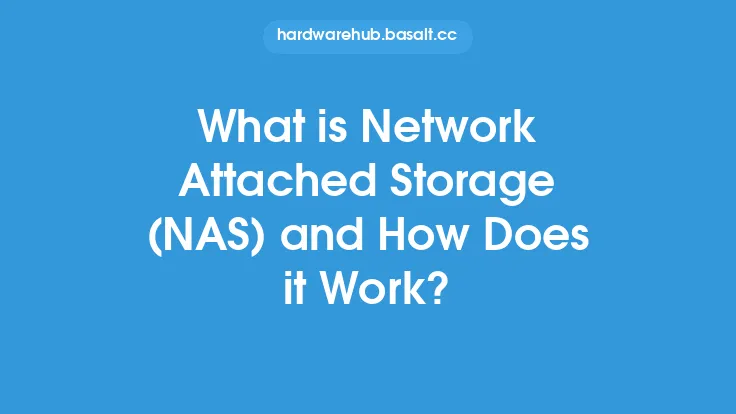Cloud storage is a model of data storage where digital data is stored and managed on remote servers accessed through the internet, rather than on local devices such as hard drives or solid-state drives. This allows users to store, access, and manage their data from anywhere, at any time, as long as they have an internet connection. Cloud storage has become a popular solution for individuals and businesses alike, offering a convenient, scalable, and often cost-effective way to store and manage data.
Introduction to Cloud Storage Architecture
The architecture of cloud storage is based on a distributed system, where data is stored across multiple servers, often located in different geographic locations. These servers are typically owned and operated by a third-party cloud storage provider, who is responsible for maintaining the infrastructure, ensuring data availability and durability, and providing access to the data through various interfaces. The cloud storage architecture typically consists of several components, including:
- Front-end: This is the interface through which users interact with the cloud storage system, such as a web-based interface or a mobile app.
- Back-end: This refers to the servers and storage systems that store and manage the data.
- Network: This is the communication infrastructure that connects the front-end and back-end components, allowing data to be transmitted between them.
- Storage devices: These are the physical devices that store the data, such as hard drives or solid-state drives.
How Cloud Storage Works
When a user uploads data to a cloud storage system, the data is typically broken into smaller chunks and distributed across multiple servers. This process is known as data fragmentation or data striping. Each chunk of data is then stored on a separate server, and the cloud storage system maintains a map of where each chunk is stored. This allows the system to retrieve the data quickly and efficiently, even if one or more servers become unavailable. The cloud storage system also typically includes redundancy and failover mechanisms, such as data replication and load balancing, to ensure that data is always available and can be accessed quickly.
The process of uploading and downloading data to and from a cloud storage system typically involves the following steps:
- Authentication: The user authenticates with the cloud storage system, using a username and password or other authentication method.
- Data upload: The user uploads data to the cloud storage system, which breaks the data into smaller chunks and distributes it across multiple servers.
- Data storage: The cloud storage system stores the data on the servers, maintaining a map of where each chunk is stored.
- Data retrieval: When the user requests access to the data, the cloud storage system retrieves the chunks of data from the servers and reassembles them into the original file.
- Data download: The user downloads the data from the cloud storage system, which is transmitted over the internet.
Types of Cloud Storage
There are several types of cloud storage, each with its own characteristics and use cases. These include:
- Public cloud storage: This is the most common type of cloud storage, where data is stored on servers owned and operated by a third-party provider.
- Private cloud storage: This type of cloud storage is typically used by large enterprises, where data is stored on servers owned and operated by the organization itself.
- Hybrid cloud storage: This type of cloud storage combines public and private cloud storage, allowing data to be stored on both public and private servers.
- Community cloud storage: This type of cloud storage is shared among multiple organizations, typically with similar interests or requirements.
Cloud Storage Protocols and Interfaces
Cloud storage systems typically use standardized protocols and interfaces to allow users to access and manage their data. These include:
- HTTP/HTTPS: This is the most common protocol used for cloud storage, allowing users to access their data through a web-based interface.
- FTP/SFTP: This protocol is typically used for transferring large files, and is often used by businesses and organizations.
- API: Many cloud storage providers offer application programming interfaces (APIs) that allow developers to integrate cloud storage into their applications.
- Sync clients: Many cloud storage providers offer sync clients that allow users to synchronize their data across multiple devices.
Data Storage and Management
Cloud storage systems typically use a variety of techniques to store and manage data, including:
- Data compression: This reduces the size of the data, making it faster to transmit and store.
- Data encryption: This protects the data from unauthorized access, using encryption algorithms such as AES or SSL.
- Data deduplication: This eliminates duplicate copies of data, reducing storage requirements and improving efficiency.
- Data versioning: This allows multiple versions of a file to be stored, allowing users to retrieve previous versions if needed.
- Data backup: This involves creating copies of the data, which can be used to restore the data in case of a failure or disaster.
Scalability and Performance
Cloud storage systems are designed to be scalable, allowing users to easily increase or decrease their storage capacity as needed. This is typically achieved through the use of distributed systems, where data is stored across multiple servers. Cloud storage systems also often include performance optimization techniques, such as load balancing and caching, to ensure that data can be accessed quickly and efficiently. Additionally, many cloud storage providers offer content delivery networks (CDNs) that can cache data at edge locations, reducing latency and improving performance for users in different geographic locations.





